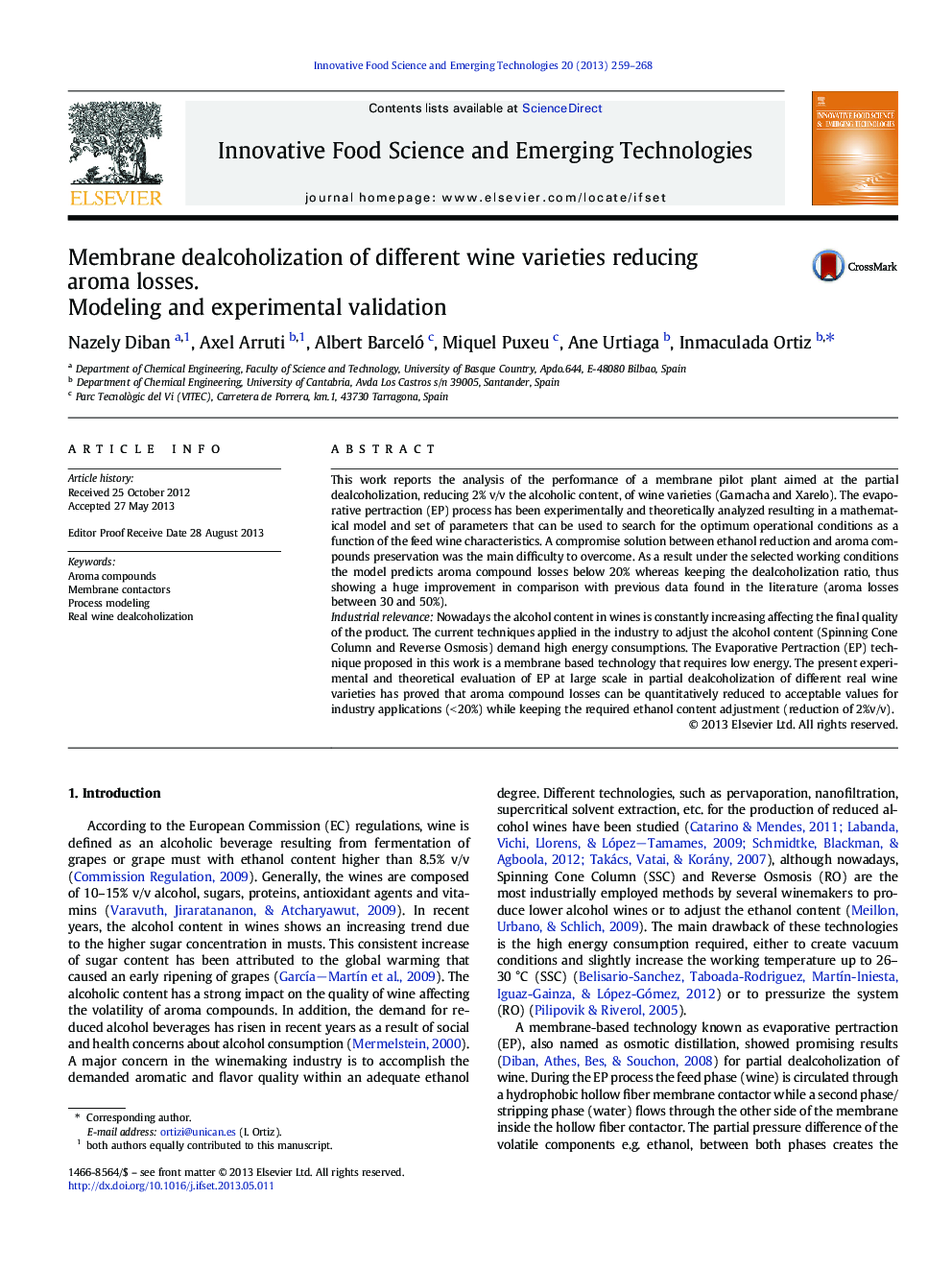| Article ID | Journal | Published Year | Pages | File Type |
|---|---|---|---|---|
| 2086598 | Innovative Food Science & Emerging Technologies | 2013 | 10 Pages |
•Evaporative pertraction demands low energy for partial dealcoholization of wine.•Large scale EP runs show high effect of working variables on process performance.•A validated mathematical model predicts ethanol and aroma compounds mass transfer.•The systematic theoretical variable assessment leads to minimized aroma losses.
This work reports the analysis of the performance of a membrane pilot plant aimed at the partial dealcoholization, reducing 2% v/v the alcoholic content, of wine varieties (Garnacha and Xarelo). The evaporative pertraction (EP) process has been experimentally and theoretically analyzed resulting in a mathematical model and set of parameters that can be used to search for the optimum operational conditions as a function of the feed wine characteristics. A compromise solution between ethanol reduction and aroma compounds preservation was the main difficulty to overcome. As a result under the selected working conditions the model predicts aroma compound losses below 20% whereas keeping the dealcoholization ratio, thus showing a huge improvement in comparison with previous data found in the literature (aroma losses between 30 and 50%).Industrial relevanceNowadays the alcohol content in wines is constantly increasing affecting the final quality of the product. The current techniques applied in the industry to adjust the alcohol content (Spinning Cone Column and Reverse Osmosis) demand high energy consumptions. The Evaporative Pertraction (EP) technique proposed in this work is a membrane based technology that requires low energy. The present experimental and theoretical evaluation of EP at large scale in partial dealcoholization of different real wine varieties has proved that aroma compound losses can be quantitatively reduced to acceptable values for industry applications (< 20%) while keeping the required ethanol content adjustment (reduction of 2%v/v).
